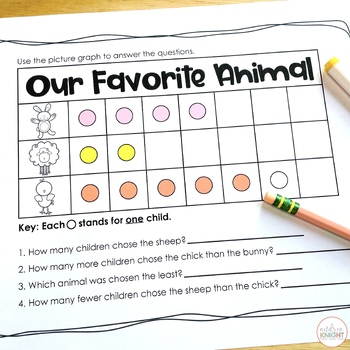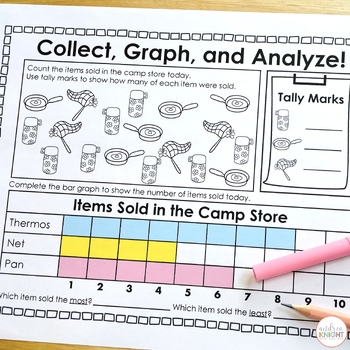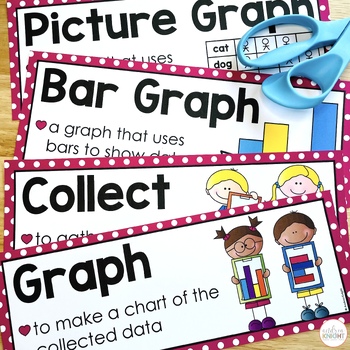Collecting, Graphing, and Interpreting Data - First Grade Math Skills Worksheets
- PDF
What educators are saying
Also included in
- MATH BUNDLE for 1st GRADE STUDENTSThis First Grade Math Bundle includes 12 standards-based resources developed for children in 1st grade to help them review and master math skills in fun and engaging ways. The bundle includes resources covering multiple first grade concepts, such as:basic addition aPrice $48.00Original Price $67.95Save $19.95
Description
ORGANIZE, REPRESENT, AND INTERPRET DATA - 1.MD.C.4
I created this packet to provide my students with additional practice on collecting, graphing, and analyzing data using tally charts, picture graphs, and bar graphs.
THE SET INCLUDES:
- vocabulary picture cards for 6 key terms
- picture graphs and bar graphs with preloaded data to analyze
- several open-ended graphing pages, allowing children to collect real data from their peers
The analyzing pages vary in problem-solving difficulty and allow students to respond:
- with single words
- in sentences
- and in standardized form (bubbling the correct answer)
I have also used these materials for additional HOMEWORK practice and formative ASSESSMENTS.
Click on the PREVIEW to see sample pages and feedback from other teachers.
HELP PREVENT SUMMER REGRESSION:
TEACHERS LIKE YOU SAID:
⭐️⭐️⭐️⭐️⭐️ “I've used this resource now for what feels like FOREVER. I absolutely adore it." (Mrs. Reks)
⭐️⭐️⭐️⭐️⭐️ “This data pack is better than what is in our math series. Engaging and easy to understand." (Michele R.)
⭐️⭐️⭐️⭐️⭐️ “Oh my goodness! This is perfect for my Smarties! This is one section of the CCSS that ALL of them need practice with, especially the comparisons. Thank you!!!" (Lynn Z.)
Additional Math Materials in my Store:
- Let's Practice Place Value
- Missing Addends - Written Equations and Word Problems
- Math Games for Partners
- Word Problems for First Grade - Addition and Subtraction
Thank you for your interest in this item.
After purchasing, REMEMBER TO LEAVE FEEDBACK.
Each review leads to TPT CREDIT you can use for future purchases!
Copyright © Andrea Knight
All rights reserved by the author.
Permission to copy for single classroom use only.






